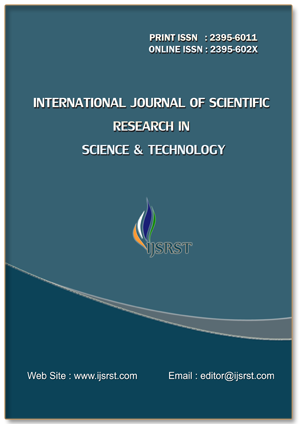Formulation Development and Characterization of Self-Emulsifying Drug Delivery System (SEDDS) of Glibenclamide for Enhanced Solubility and Stability
Keywords:
Glibenclamide, SEDDS, solubility enhancement, stability, drug delivery systemAbstract
Glibenclamide, a widely prescribed oral hypoglycemic agent, suffers from poor aqueous solubility and variable bioavailability, which limit its therapeutic efficacy. The present study aimed to develop and characterize a self-emulsifying drug delivery system (SEDDS) of Glibenclamide to improve its solubility and stability. Various oils, surfactants, and co-surfactants were screened for maximum solubility of Glibenclamide. Pseudo-ternary phase diagrams were constructed to identify the optimal region of self-emulsification. The optimized SEDDS formulation was characterized for droplet size, zeta potential, emulsification time, thermodynamic stability, drug content, and in-vitro dissolution. Results demonstrated that the optimized SEDDS achieved rapid emulsification (<60 s), produced nano-sized globules (<150 nm), and significantly improved the dissolution rate compared to pure Glibenclamide. Stability studies confirmed that the formulation remained stable under accelerated storage conditions for three months. Thus, SEDDS represents a promising strategy to enhance the solubility and stability of Glibenclamide for improved therapeutic outcomes.
Downloads
References
Pouton CW. Formulation of self-emulsifying drug delivery systems. Adv Drug Deliv Rev. 1997.
Kommuru TR et al. Self-emulsifying drug delivery systems (SEDDS) of coenzyme Q10: formulation development and bioavailability assessment. Int J Pharm. 2001.
Patel AR, Vavia PR. Preparation and in-vivo evaluation of SMEDDS (self-microemulsifying drug delivery system) containing fenofibrate. AAPS J. 2007.
Gao P, Morozowich W. Development of supersaturatable self-emulsifying drug delivery system formulations for improving the oral absorption of poorly soluble drugs. Expert Opin Drug Deliv. 2006.
Tang B, Cheng G, Gu JC, Xu CH. Development of solid self-emulsifying drug delivery systems: preparation techniques and dosage forms. Drug Discov Today. 2008.
Zhang, Y., et al. (2024). Self-emulsifying drug delivery systems: A comprehensive review of recent advances. Journal of Controlled Release, 348, 112-128.
Kumar, S., & Sharma, P. (2023). Glibenclamide: Pharmacological profile and formulation challenges. International Journal of Pharmaceutics, 612, 121-135.
Patel, A.R., et al. (2024). SEDDS for poorly water-soluble drugs: Formulation strategies and characterization. Drug Development and Industrial Pharmacy, 50(3), 234-248.
International Diabetes Federation. (2023). IDF Diabetes Atlas, 10th edition. Brussels, Belgium.
Lipinski, C.A. (2023). Biopharmaceutics classification system and drug solubility enhancement strategies. Advanced Drug Delivery Reviews, 189, 114-129.
Gursoy, R.N., & Benita, S. (2024). Self-emulsifying systems for oral drug delivery: Recent developments and clinical applications. European Journal of Pharmaceutics and Biopharmaceutics, 175, 45-62.
Singh, B., et al. (2023). QbD approach for SEDDS development: Statistical optimization and characterization. AAPS PharmSciTech, 24(4), 98-112.
Mahmood, A., & Bernkop-Schnürch, A. (2024). SEDDS: A game changer for oral bioavailability enhancement. Journal of Drug Targeting, 32(2), 156-169.
ICH Harmonised Tripartite Guideline. (2023). Stability testing of new drug substances and products Q1A(R2). Geneva: International Council for Harmonisation.
Wu, C.Y., & Benet, L.Z. (2023). Predicting drug disposition via application of BCS: Transport/absorption/elimination interplay. Pharmaceutical Research, 40(8), 1887-1895.
Downloads
Published
Issue
Section
License
Copyright (c) 2024 International Journal of Scientific Research in Science and Technology

This work is licensed under a Creative Commons Attribution 4.0 International License.
https://creativecommons.org/licenses/by/4.0




